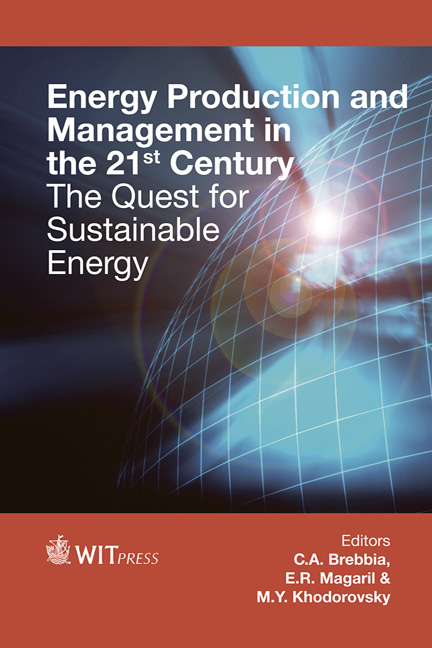Wind Ventilation In The Built Environment
Price
Free (open access)
Transaction
Volume
190
Pages
13
Page Range
749 - 761
Published
2014
Size
404 kb
Paper DOI
10.2495/EQ140702
Copyright
WIT Press
Author(s)
E. Ö. Aktuğlu Aktan
Abstract
Wind is the perceptible natural movement of the air, especially in the form of a current of air blowing from a particular direction. Wind is caused by differences in atmospheric pressure. Wind is the kinetic energy of air in motion. It is a renewable energy which comes from natural resources which are naturally replenished. Wind power is conversion of wind energy into a useful form of energy. Wind ventilation is a kind of passive ventilation, using the force of the wind (or local air pressure differences) to pull air through the building. Wind ventilation is the easiest, most common, and often least expensive form of passive cooling and ventilation. The use of natural ventilation is definitely an advantage with the raising concerns regarding the cost and environmental impact of energy use. The natural ventilation provides ventilation (outdoor air) to ensure safe healthy and comfortable conditions for building occupants and for people on the street without the use of fans. It also provides free cooling without the use of mechanical systems, when the orientation and lay-out of the built-up area useful direction. For this paper, related literature, articles and books are researched. There are a lot of cases and different approaches in these writings. It is eliminated by the subject of wind ventilation in the built environment. The purpose of this paper is to explain the importance of using wind energy as passive and natural ventilation in the built environment. It is essential to give some guidelines how the wind energy is used for a sustainable lifestyle between the buildings and in the city. Our goal is to reduce the greenhouse gas emissions for the sustainable future. Keywords: wind ventilation, passive cooling effect, thermal comfort, sustainable cities.
Keywords
wind ventilation, passive cooling effect, thermal comfort, sustainablecities.





